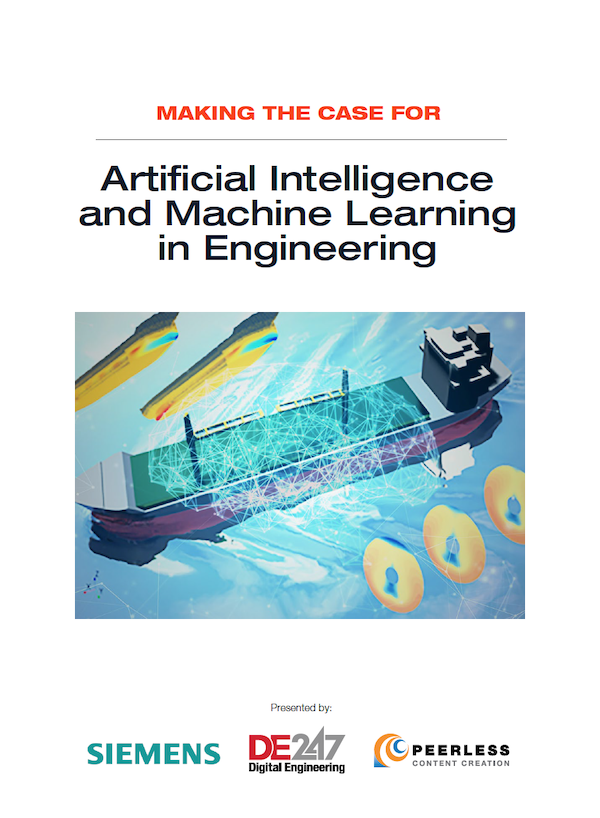Machines Learn Differently
This commentary gets practical about one set of AI technologies that’s just about ready for broader adoption: machine learning (ML).
Latest News
March 1, 2019
Artificial intelligence (AI) is so hyped today that most people believe it can do more than it actually can in a real-world setting. Let’s ratchet down and get practical about one set of AI technologies that’s just about ready for broader adoption: machine learning (ML).

ML is a type of AI in which the machine, really a computer algorithm, combs through data to:
- discover patterns that might not be apparent to humans (why does this machine fail every time there’s a thunderstorm?);
- categorize similar objects (how many of the cars in this parking lot are four-door sedans?);
- predict outcomes based on identified patterns (this machine fails when its temperature goes over 100°C; when will it again get to 100°C?); and
- reveal new patterns in data sets (if this machine fails, what else might be happening?)
Once these algorithms are programmed, all new data added to the data set makes the algorithm “smarter” and more able to detect new but similar patterns.
But what is “smarter”? It’s not smarter the way a child is, learning isolated letters, then combinations and eventually reading novels. The machine is only as “smart” as the algorithm parameters and the data it examines. ML may find new opportunities or problems to be solved, but it cannot create new hypotheses or figure out a new action to take—it is limited to the data it’s exposed to.
Predicting Patterns
Predictive maintenance is one example of ML in action today. Apply an algorithm at a facility’s operating data and let it detect patterns and opportunities for improving efficiency and uptime. It can use historical and real-time data to determine when and how a particular machine fails; it can even create a list of suggested preventive actions to avoid a possible failure.
Once we add operating data from similar facilities or machines, we can see that there’s something in the way the original facility carried out maintenance that may be causing the problem. We’ve added more data, and therefore get a potentially bigger result.
ML is particularly suited to problems where we already believe a pattern exists, but we just can’t see it because there’s too much data. The connection is intuitively there and there are initial correlations, but we can’t extract the logic ourselves. It’s also great for situations where we know what actions to take, in general, but need to be certain of the specifics before we start—computers are great at supplying details and accurate data.
Supervised vs. Unsupervised Learning
Visual defect analysis is another ML technology coming to market. The data here is a stream of images of parts as they exit a CNC (computer numerical control) machine. We could check each image to see if there are manufacturing flaws, but the operation is so fast that we can only realistically verify every fifth or 10th part, taken out of the stream of manufacturing. That’s not great because it identifies a potential problem too late and manufacturers still end up with a bunch of rejected parts. ML can help, but only if an operator teaches how to categorize each image as acceptable or not. The machine then uses this input to derive correlations and logic that it can use to predict future answers. This type of ML is called supervised learning and is how a lot of AI engines are built today.
Unsupervised learning, on the other hand, has the machine alone identify patterns. It determines correlations and relationships by parsing the available data, drawing inferences and grouping like things based on observation.
Beyond unsupervised learning is deep learning, which relies on the machine to generate really complex models from vastly larger amounts of data than other methods. Many practical AI applications today are in the supervised to unsupervised range of the ML spectrum; much of the research is being done to support the massive data and compute resources needed for deep learning.
One response to early detection of a manufacturing defect is part redesign. Maybe try a different material or a contour that’s more tuned to this CNC machine. Similarly, if a machine fails in the field, what can a design engineer change to improve the customer’s experience? AI gives you the time to be creative in ways a computer never will be able to.
How can you get started with AI? Start with an ML problem, perhaps predictive or prescriptive maintenance, or defect detection. Figure out how to validate results. Look at it simply: Does the algorithm correctly give the actual result? Can you put the output into action? If both are a “yes,” you’re doing it right.
Subscribe to our FREE magazine, FREE email newsletters or both!
Latest News
About the Author
Monica Schnitger is the founder, president and principal analyst of Schnitger Corporation. She has developed industry forecasts, market models and market statistics for the CAD/CAM,CAE, PLM, GIS, infrastructure and architectural / engineering / construction and plant design software markets since 1999.
Follow DE





